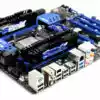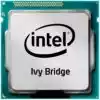The Intel Atom CPU is the golden processor of the netbook crowd but the next-gen VIA Nano might turn heads. The chip is set to drop some time in the middle of 2009 to help power the next round of netbooks.
It should clock-in with 1333MHz FSB, 1MB of L2 cache, all built around a 64-bit infrastructure. Best of all, a 64-bit version is should drop at the end of ’09. Low power consumption, high speed, 64-bit. It could power one hell of a netbook.
The VIA Nano (formerly code-named VIA Isaiah) is a 64-bit CPU for personal computers. The VIA Nano was released by VIA Technologies in 2008 after five years of development by its CPU division, Centaur Technology. This new Isaiah 64-bit architecture was designed from scratch, unveiled on 24 January 2008, and launched on 29 May, including low-voltage variants and the Nano brand name.
The processor supports a number of VIA-specific x86 extensions designed to boost efficiency in low-power appliances.
On November 3, 2009, VIA launched the Nano 3000 series. VIA claims that these models can offer a 20% performance boost and 20% more energy efficiency than the Nano 1000 and 2000 series. Benchmarks run by VIA claim that a 1.6 GHz 3000-series Nano can outperform the aging Intel Atom N270 by about 40–54%. The 3000 series adds the SSE4 SIMD instruction set extensions, which were first introduced with 45 nm revisions of the Intel Core 2 architecture.
On November 11, 2011, VIA released the VIA Nano X2 Dual-Core Processor with their first ever dual core pico-itx mainboard. The VIA Nano X2 is built on a 40 nm process and supports the SSE4 SIMD instruction set extensions, critical to modern floating point dependent applications. Via claims 30% higher performance in comparison to Intel’s Atom with a 50% higher clock.
The Zhaoxin joint venture processors, released from 2014, are based on the VIA Nano series.

I am Chris, a musician. I work as an audio engineer in mastering and arranging bridges in existing songs and the arrangement and orchestration of chorus. In Firing Squad I test gear provided by local distributors during a couple of days and write a review. I also write about AV topics, amplifiers, speakers and headphones.
Author And Fact Check
Written by author J. Bond and fact checked by Martin Pino and J. Esposito to ensure that the data retrieved is objectively correct

